Lunch with... Desiré Wilson
The talented South African remains the only woman ever to have won an F1 race. But she’s never thought of herself in those terms – she’s just a racing driver.
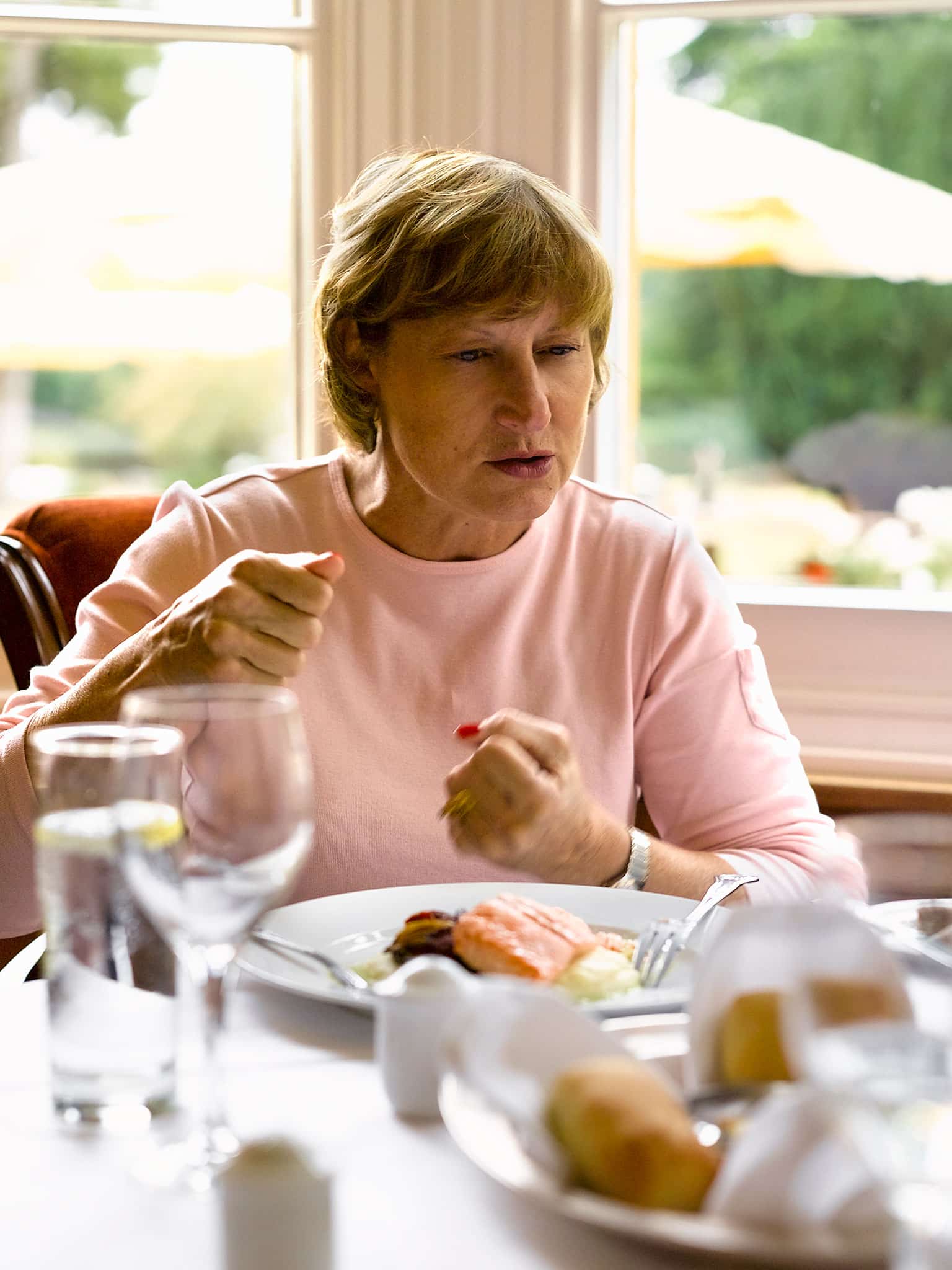
Redoubtable females run like a thread through motor sport history, from Camille du Gast to Danica Patrick, from Kay Petre to Christabel Carlisle. But only two have raced in World Championship Grands Prix. Maria-Teresa de Filippis did three in 1958 with her own Maserati 250F, and Lella Lombardi ran in a dozen for March in 1975/6. Lella remains the only woman to have scored points – to be precise, half a point, finishing sixth in the shortened 1975 Spanish GP. Divina Galica (1976-8) and Giovanna Amati (1992) each entered three events, but failed to qualify.
For many, however, the most talented female racer of the late 20th century was the aggressively determined South African Desiré Wilson. She did start an F1 Grand Prix, at Kyalami in 1981: but that race slipped from the reference books when, thanks to FOCA/FISA politics, it was retrospectively deleted from the championship. She ran strongly in the British Aurora F1 series, and led the 1980 Brands Hatch round from start to finish. It made her the first, and so far the only, woman to win a Formula 1 race of any kind. Her results in sports cars probably give her more satisfaction: she’s the first woman to have won one, and then two consecutive, World Sports Car Championship rounds. But her biggest achievement was holding together a racing career for as long as she did, drawing on huge reserves of purpose and self-belief when money and opportunity were often absent.
Born Desiré Randall in 1953 in Brakpan, near Johannesburg, she pronounces her name ‘Des-Ray’ but prefers to answer simply to Des. She lives in Salt Lake City now, but we meet at the gothic pile that is the Oakley Court Hotel in Windsor. Her lunch is healthy: haddock chowder, poached salmon, sparkling water.
She was just five years old when she started racing micro-midgets, tiny 60mph dirt-track single-seaters. “My father was a bike racer, won the South African title on a Manx Norton, but he stopped after he’d hurt himself too many times. Since a toddler I’d sat with him in the garage while he worked on his bike, soaking up everything he was doing. It became a passion.”
Des was invariably the smallest and youngest driver in her races: the others were almost all boys, mostly twice her age. But this minuscule figure, in crash helmet and overalls several sizes too big for her, made up for it in fearless aggression, and her light weight and instinctive car control on the loose surface won her a lot of races. “I was called Boots because I didn’t like taller people talking over the top of me, so I used to kick them in the shins to get their attention.” Aged eight she broke the outright lap record on the dirt oval at Benoni, faster than the full-size stock cars. At 12, running now against 16-year-olds, she tied for the title of South African Micro-Midget Champion, losing out by inches in a tie-decider match race.
“Even when I was little I was conscious of wanting to do something with my life, move on from Brakpan, where nothing important ever happened. When I was 12 I switched to horse riding, jumping and polo, but we had no money for that, so I took to athletics, track and field. I trained three hours a day after school, won everything except the shot-put, because I didn’t have the body weight.” Then she reached South Africa’s minimum racing age of 18. “A guy in Brakpan had a Formula Vee, and Dad persuaded him to let me try it at Kyalami. He said, ‘That’s the accelerator, there’s the brake and the clutch, and this is the lap record.’ As soon as I got out on the track it was all I ever wanted to do.” Her father built up a Vee for her, and that home-made car with its scrapyard engine took her to second in the 1974 national championship.
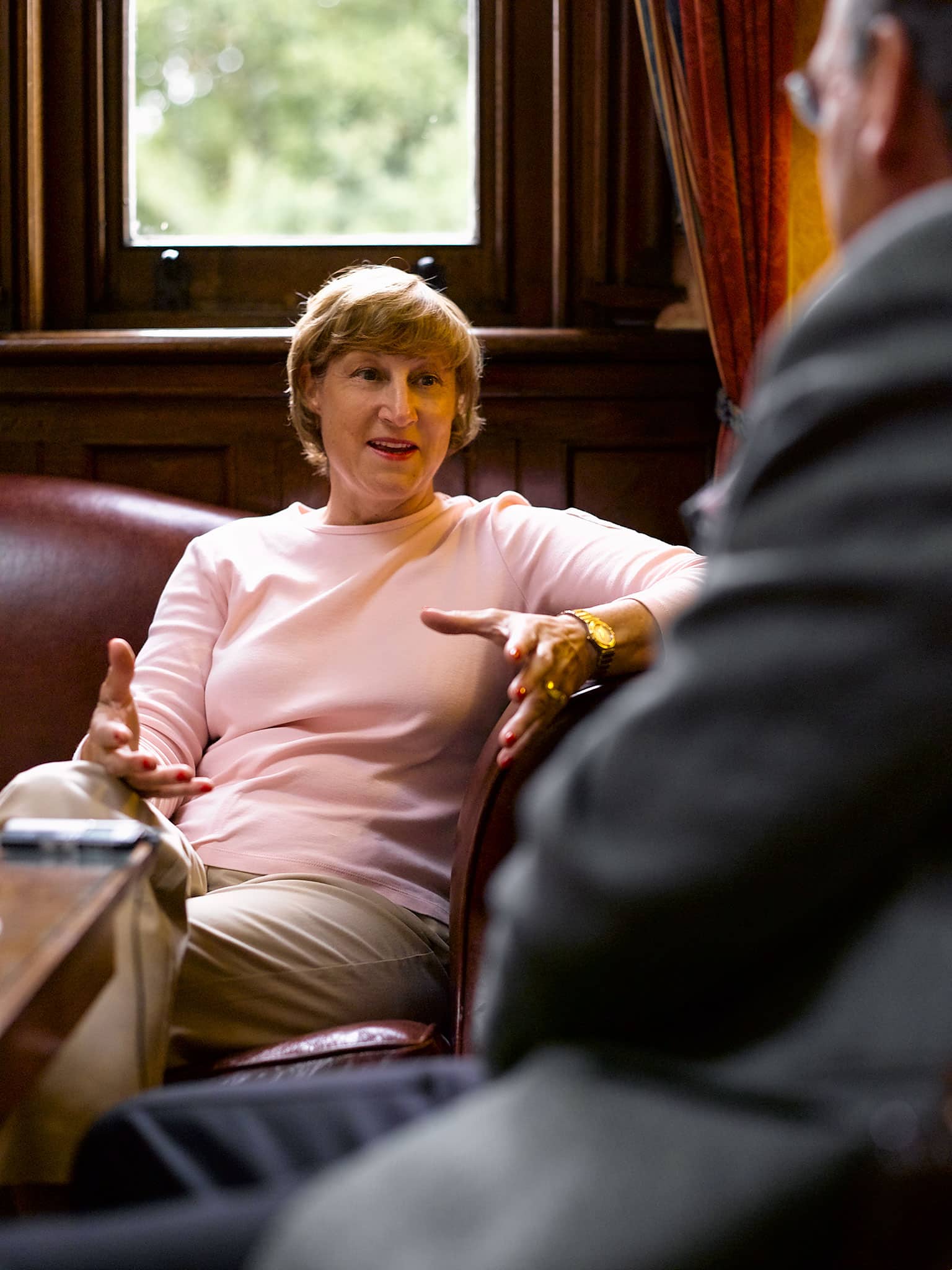
In 1975 Des met a shrewd Formula Ford racer called Alan Wilson, and they started to run together with a pair of ancient FF Titans. Soon she was beating him, then earning podiums, then winning races. That year they were married. Recognising his wife’s superior talent, Alan gave up racing, sold both cars to fund a three-year-old Merlyn for her, and hustled sponsorship from a local women’s magazine. In 1976 Des won the South African FF title and, like Jody Scheckter six years before, the Driver-to-Europe Award.
“In Jody’s day, Driver-to-Europe brought a relationship with the Ford Motor Company and a lot of help. By the time I won it, it was just two air tickets to London and a small cheque. Alan and I sold everything we had – including the Merlyn – and set off. When we got to England we went round the racing car factories. ‘What can you do for us, what does it cost?’ The answer was always the same: ‘How much money have you got?’ But we’d met the Dutchman Huub Vermeulen when he was racing at Kyalami, he’d been friendly, and he had a Crosslé agency. Having got nowhere in England, we went to Holland to see if he remembered us. He offered to lend us an FF2000 chassis, and said if we worked for him he’d pay us in kind. We built up the Crosslés he sold, and he also had a tennis racket business, so I strung rackets and Alan painted them. We traded the hours we worked for parts, and raced in the Benelux Championship at the weekends.”
Des’ first European outing, at Zolder, was also her first race in the rain. She started 12th and came through to finish third, although she had to bang wheels to get there. She also set fastest lap. The progress of “D Wilson” up the field was followed excitedly by the commentator, who went into overdrive when D Wilson removed her helmet and climbed onto the podium. “Wilson is a woman!” he shouted in Flemish astonishment. More good results followed, but by mid-season, despite Vermeulen’s help, the money was running out. Des and Alan rationed themselves to one square meal every three days and subsisted on snacks, but they knew that soon they’d have to admit defeat and return to South Africa.
“Then we heard that a businessman called Jan Bik wanted to sponsor us. It sounded like the answer to our prayers, but Huub warned us not to get involved with Mr Bik. When we asked why not, he became evasive. We went to an address in the Amsterdam docks, knocked, a little peep hole slid open, and we were ushered in. There were lots of girls around, and every so often guys would turn up and disappear upstairs. Everything was dripping with red velvet. Me from South Africa, all naïve, I said to Alan, ‘What is this place?’ Mr Bik’s office contained only a roll-top desk and a huge bed trimmed in mock leopard skin. He asked us how much we wanted to get through the rest of the season. Alan and I looked at each other and simultaneously came up with some stratospheric figure, which he said was too much, and we shook hands and left in a hurry. I think, later on, David Kennedy did get some sponsorship from Mr Bik…

Forget she’s a girl: Wilson’s talent shone through
Motorsport Images
“Michael Bleekemolen was the local hero then, and one of his sponsors bet the other that I could beat him before the end of the season. For the bet to be fair they had to ensure I had the same equipment, so I got tyres and parts out of it, and in the last race of the season at Zandvoort I beat him fair and square. I never knew how much the bet was, but it must have been quite a lot.” By the end of the season she’d done 26 races on 10 tracks, won twice and taken four lap records. Penniless, they returned to Johannesburg and, helped by Kyalami boss and race promoter Alex Blignaut, arranged to borrow an old Formula Atlantic. But after a couple of good races Blignaut, having earlier been very encouraging, phoned Des and told her, in brutal terms, to get lost. Her entries would no longer be accepted: if she still wanted to race, she’d have to do it elsewhere. “Years later we found out why. The big cigarette companies sponsored all the front-running cars in South Africa then, and the image for Marlboro, Lucky Strike and Gunston was very macho, men in cowboy hats. It would be bad for their image if their guys kept being beaten by a girl in an older car. They told Blignaut if I continued racing, they’d pull their sponsorship.
“My life has always been disappointment one day, opportunity the next. We were wondering what to do when I got a message from John Webb of Brands Hatch, inviting me to drive in a Ford Escort ladies’ race. We had no money for the airfare, but Alan persuaded the magazine that helped me in FF to stump up. We got to Brands, I led from start to finish, and Alan and I went up to Webby’s suite to say thank you. He said, ‘What are you guys up to?’ ‘Nothing, at the moment…’ Turned out his track manager had just left. He offered Alan the job, found me some admin work in the racing school, and got us work permits.”
As boss of Brands Hatch, Mallory Park, Snetterton and Oulton Park, John Webb was an inventive promoter, constantly on the lookout for anything that would sell his meetings to the papers. His Ford celebrity races – like the one between members of the House of Commons and House of Lords – were specifically designed to generate column inches. For the same reason, he cherished a dream of creating a woman F1 driver. He’d tried with Divina Galica, who was entered for the 1976 British GP in a Surtees but hadn’t qualified. He reckoned Desiré had publicity potential.
“At first we lived in a caravan. Occasionally a dreadful old FF school car would be available and I’d race it. Then one Sunday an FF2000 driver, Nick Challis, turned up at Brands with a terrible hangover and decided he couldn’t face practice. I was at home cleaning the ’van when Alan called me, and I got out in this red Crosslé with 10 minutes of practice left.” Des qualified fifth, finished fourth in the race, and set fastest lap. She drove the car for the rest of the season, also campaigning a Sports 2000 through a Brands Hatch deal.
“Then John Webb announced he was going to enter me for the British Grand Prix at Brands, and set up an old March for me to drive in the tyre tests in June. I was a bit worried about my lack of experience, but I thought, ‘Well, it’s just another race car, let’s see if I can drive this thing.’ Jackie Epstein, who managed the Brands racing drivers’ school, was my overseer, and he was really good: limited my revs, made sure I got into it slowly, and by the end of the two days I was going pretty well. Then John said he wasn’t going to enter me for the Grand Prix after all. It had just been a publicity stunt. But he fixed me a ride in the Aurora series in an F1 Ensign. I never knew what his deals involved. I was just told, ‘There’s your race car, now drive it.’ First time out, at Oulton, I qualified third, but I’d never done a standing start with all that horsepower, and I destroyed the clutch when the flag fell. I was in the points in all my other races, and I got third at Thruxton.

Aged five, aboard a 60mph MicroMidget
“For 1979 I drove Melchester Racing’s ex-Patrick Depailler Tyrrell 008. First race was Zolder – two years on from my first European race, and it was raining again. I qualified fourth, and by lap 29 I was in the lead. I like the wet: my style is not to brake ultra-late into corners, but brake longer and softer, and concentrate on keeping the entry speed as high as possible. I built a nice lead, but then I messed up big time. My pitboard showed +10, telling me I was 10 seconds ahead of David Kennedy’s Wolf. Three laps later it said +4. I couldn’t believe he’d made six seconds on me, so I pushed harder – and spun. Later I found my gap had gone up to +14, but the first digit had fallen off the board! So I finished third. In the first six races that year I had four podiums, but by mid-season the later ground-effect cars were coming in and we were less competitive.
“The Texan Gordon Smiley was my team-mate at Melchester, and we became good friends. He was very hyper, always trying to over-achieve, always worried what other people thought. He suffered from nervous tension. At one stage he was rushed to hospital with stomach pains: the doctors couldn’t find anything wrong with him, so we collected him, took him home, fed him lots of Coca-Cola, talked for hours. After a few days he was fine.
“I was still doing Sports 2000, and racing two very different cars on the same day was sometimes hard. In practice at the Race of Champions I decided to do three quick laps in the 2000, set a time, and then park it and focus on the F1 car. But I put a wheel off at Westfield and had a big accident. In those days the medical facilities were quite basic. St John’s Ambulance looked at me and said, ‘How’re you doing, love?’ ‘I’m fine.’ ‘OK, have a nice day.’ And off I went. Actually I had concussion and I’d broken my foot, but I didn’t want anyone to know. The Aurora cars, on their harder rubber, were on the grid with the modern F1s, and I qualified right behind John Watson’s McLaren. That was probably the first time I started to think, ‘Maybe I can do this.’ After my bang on the head I wasn’t 100 per cent, but I finished third of the Aurora cars, then went straight out in my patched-up Sports 2000 car, finished fourth in that.
“The next year, 1980, was extraordinary. In the space of five weeks I won an Aurora F1 and two World Sports Car rounds. I was doing the Aurora in a Wolf for Teddy Yip and Sid Taylor, and at Brands I was on the outside of the front row, with Emilio de Villota’s Williams on pole. I reckoned if I could lead into Paddock I could win it. The flag fell, I was first into Paddock – and they stopped it, because my team-mate Geoff Lees in the other Wolf had tangled with somebody. Had to do it all again. But it worked the second time too. I didn’t just want to win, I wanted fastest race lap, so on the last lap I just pushed harder, and got that too.

At 12, Des was a runner-up in South Africa Midget series
“Once more Webby lined up a British Grand Prix drive for me, this time in a Williams FW07 run by John Macdonald. By now I felt ready for it. I was working out a lot, and I was physically fit and strong. All I had to do was adapt to the sliding skirt ground-effects. In the June tyre tests I was quicker than Rupert Keegan, my team-mate in the other Macdonald Williams, but I knew I had to find more time. At Hawthorns, in the Aurora car, you’d brake and downshift going in. With the skirts it was stay in fifth, lift briefly and back on the power. You didn’t get the feel you got with the flat-bottomed cars, and the steering was very heavy, but the grip was amazing. I was very happy, very comfortable. Over the three days I was 10th quickest out of 21 drivers, all of them current F1 runners. For the Grand Prix there were going to be 27 entries after 24 places, and I knew now I could qualify, no problem.
“Four weeks later I got in the car on the first day of practice, and the seat and the pedals felt wrong. I called John Macdonald over and said, ‘What’s going on? The cockpit’s all different.’ He told me it hadn’t been touched since the tyre test. I looked at the chassis number, and realised it was a different car. Macdonald told me I didn’t know what I was talking about. I went out, and the car felt unpredictable and unstable. I was two seconds a lap slower than I’d been in the test. Later, I found out I’d been put in the Aurora car that Salazar crashed two weeks before at Monza. They’d thrown it back together and put some skirts on it. I missed the race by 0.9sec. That really destroyed me.
“Then I lost my Aurora drive. Kevin Cogan brought some money and joined the Teddy Yip team. He never beat me, but when the team went down to a single car Sid said to Teddy, ‘Run Kevin, he’s going to get into F1. Des is a woman, she’ll never make F1.’ Well, Kevin had a couple of tries, but he didn’t make F1 either…”

Meanwhile Des was also building herself a sports car career. “It was down to John Webb again. The Brands Hatch round of the World Sports Car Championship was a six-hour race in March. John’s wife Angela, who was marketing director at Brands, phoned Alain de Cadenet and asked him if he’d fixed his co-driver yet. ‘There’s a driver we want in the race, and we’ll make it worth your while. And she’s quick around Brands.’ ‘What do you mean, she?’ says Alain. We met for the first time at the start of practice, and we just gelled. He was exceptional to me, didn’t seem to mind that I was quicker than him: I won’t say he doesn’t have an ego, because all racing drivers have egos, but he accepted me, I accepted him, this is what we’re going to do, let’s get on with it.
We finished third in the Six Hours behind the works Lancias of Riccardo Patrese and Michele Alboreto, so Alain said I’d better come with him to the next round at Monza.

1976 South African Formula Ford title led to a European move
“Money was so short that Alain sold the de Cadenet’s quick-lift jacks to raise funds to get to Italy. But after various practice dramas the car flew in the race. With half an hour to go I was leading Henri Pescarolo’s Porsche 935 and Patrese’s Lancia. Then a big black cloud came over, and suddenly it was bucketing down. I thought, ‘This can’t be happening’, because everybody else could change tyres quickly, and we only had a wheel wrench and a copper mallet. I decided to stay out on slicks. Pescarolo switched to wets, and at once he was catching me at 10 seconds a lap. I was desperately trying to keep it on the island on the streaming track, and with three laps to go he passed me. But I kept him in sight, and with two laps to go I saw him dive into the pits. His crew had miscalculated, he needed fuel to get to the end. He came straight out again, but I stayed in front, won it by a few seconds.
“Two weeks later we were at Silverstone for the Six Hours there. I was leading, but the brake pedal was going very soft, and lapping somebody going into Woodcote I missed the chicane. I came to a halt and then drove on, hoping the stewards would think I’d given myself my own penalty. But I was docked a lap anyway. That put me way behind, so I had to drive my heart out. I unlapped myself on the leaders, the Sigi Brunn/Jürgen Barth Porsche, but got held up by a slower 935 that was hugely quick down the straights but very slow in the corners. In the end I had to dive under him and give him a little brake test, so he couldn’t get onto his 800bhp and squirt past me again. That dealt with him. Gradually I reeled in Sigi, got my lead back with 23 minutes to go, and we won that one too.
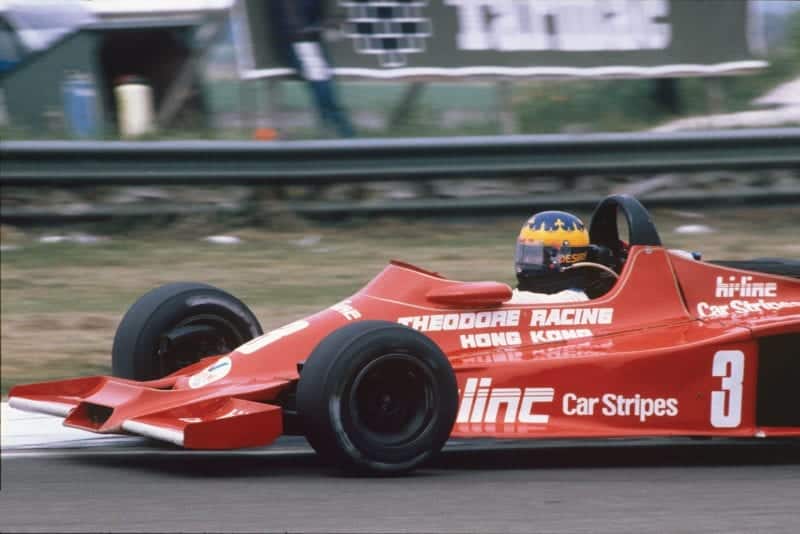
Des is best remembered for her Aurora F1 victory at Brands Hatch in 1980, but two world sportscar wins followed soon after
Motorsport Images
“Five weeks later we were at Le Mans, with high hopes. François Migault was our third driver. In qualifying, after endless rain, it started to dry out. Alain set a time, François set a time, and in the closing minutes I went out, did a decent time on my second lap – and then had a big accident on my third. At the exit of the Porsche curves, on slicks, I caught a wet spot and spun. As I hit the barrier the wooden support broke and it just fell over, and launched me. The car landed on its back and I was soaked in fuel. I was conscious and unhurt, but when you’re upside down you don’t always think clearly. I was trying to turn off the ignition, thinking, does the switch go up or down? There wasn’t a mark on me, and the car was mended for the race, but the organisers ‘lost’ the decent time I’d done on my second lap. They said I hadn’t qualified, and Alain and François did the race without me.”
Des did do Le Mans three times, finishing seventh in 1983 in an Obermaier Porsche 956, but her most bizarre tale involves the 1991 race. “It was a Japanese effort to run an all-girl team around Tomiko Yoshikawa, with Lyn St James and me and a Spice-DFL which – ugh – was painted pink. We had to wear pink overalls, too. None of the Japanese mechanics had been to Le Mans before: I think most of them had never been to a motor race. Then Tomiko couldn’t get a licence, so at the last minute I called Cathy Muller, who’d never done Le Mans, and persuaded her to join us. And right at the start of practice, Lyn crashed.” The Japanese team leased another Spice, and hastily sprayed it pink. Des qualified the car on Thursday night, but it was in no state to race. “It was unstable on the straight, it turned right under braking, the bodywork was loose, it had a terrible misfire. I drew up a list of 24 items to be fixed, urgently. But at 5pm on Friday the Japanese mechanics knocked off, locked the pit garage and went back to their hotel. There was nothing Lyn, Cathy and I could do. The car was dangerous, so we agreed I’d start and potter round for a bit, and then park.
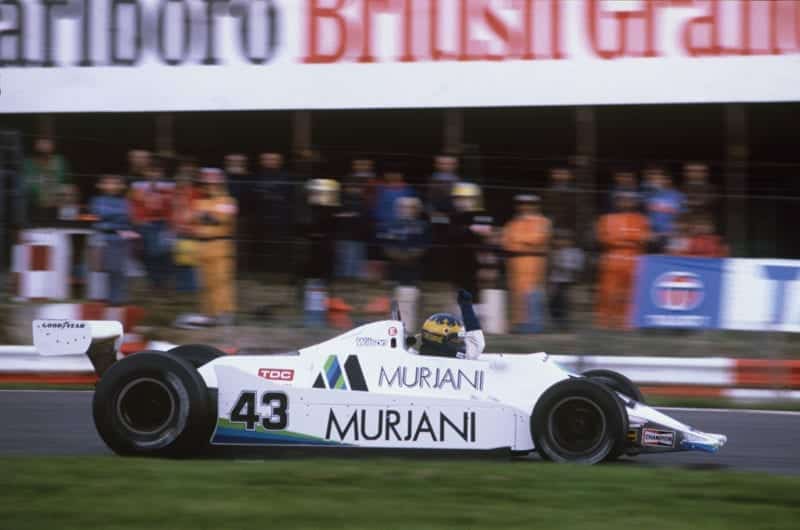
In Williams FW07 at British GP, 1980. The car had been repaired after a crash and Des did not qualify
Motorsport Images
“We got to the track on race morning, and one of Dave Prewett’s crew – their Spice had failed to qualify – said to me, ‘I think you’ll like your car today.’ I didn’t know what he was talking about. Well, I went out in the warm-up, and it was perfect: went like a train, braked in a straight line, no misfire. Turned out Prewett’s boys hadn’t been able to bear what was happening with our chaotic team. So they’d picked the locks on our garage, worked on the car all night, and virtually rebuilt it. In the race it was going well, and then after six hours the car began to behave oddly. I came in and shouted to the Japanese interpreter, ‘Right rear, maybe puncture.’ He spoke to the mechanics – and they started to check the front brakes. Next thing I saw was all these Japanese being flung everywhere and the Prewett guys diving onto the back of the car. In fact the rear suspension carrier was cracked, but when they jacked the car up the crack closed up and they couldn’t see it. I rejoined, and at the top of the hill leaving the pits the rear suspension collapsed.”
After the qualifying disaster of the 1980 British GP, and with no Aurora drive, things got very quiet for Des. Then a few weeks before the 1981 South African Grand Prix she got a call from Bernie Ecclestone. “He said he was going to run me at Kyalami in a Brabham alongside Nelson Piquet. I was ecstatic, and asked when I could test the car. ‘No testing. Don’t even discuss it. Just be ready.’ Then I heard nothing until, two weeks before the race, Ken Tyrrell called. ‘Bernie hasn’t got a car for you, so you’ll be driving for me. Is that OK?’ Well, every driver’s dream was to drive for Ken Tyrrell. Even if his cars weren’t the greatest by then, he was the talent spotter.
“I’d had one opportunity of a lifetime and it hadn’t come off, but I now I was getting another. I had to make it work. Well, I qualified fine, but I didn’t do a good job in the race. I was 16th on the grid, 0.6sec slower than my team-mate Eddie Cheever, who’d had a lot of testing in the car. I had a couple of spins, and if you spun you tore the skirts to pieces and had to come in. But Ken was superb. He saw I was trying too hard, overdriving the car and getting nowhere. He sat me down and said, ‘You’re trying to drive the car faster than it can go. Go back out there and relax.’ So I did, and I found another second.
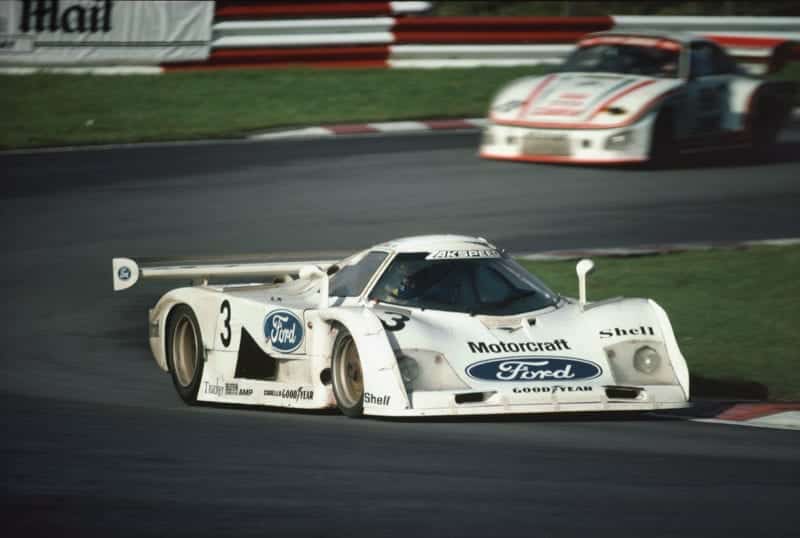
Brands specialist Wilson and Jonathan Palmer were fourth in 1982 1000Kms in Ford C100
Motorsport Images
“But in the race I totally screwed up. On the grid it started to rain, and I was adjusting my visor when the lights went out. I let the revs drop too low and stalled. They push-started me, and I got away 15 seconds behind the rest. But I caught and passed Sigi Stohr’s Arrows and Salazar’s March, and then I passed my team-mate Eddie, who was on dry tyres. It dried out, I did my stop for slicks, then on lap 51 I got on the throttle too early at Leeukop and lost the back end. I thought I could have a harmless spin and rejoin, but at that moment Piquet, in second place, came along. I turned the wheel to go backwards out of his path, and my wing hit the barrier. I found first gear and drove back to the pits, but in those days they didn’t change wings in 10 seconds, and my day was done.”
The Tyrrell drive ended up with Alboreto, but now Des set her sights on another challenge. “I told Teddy Yip I wanted to do Indianapolis, and in 1982 he got me into Bob Fletcher’s team, which was running my friend Gordon Smiley. He had a March, but I ended up with an old Eagle they’d bought in bits. Everything went wrong with that car. The first qualifying weekend I had a lot of understeer which we just couldn’t dial out, I was only doing 182, 183 averages. Then Gordon went out and tried too hard, hit the wall. I’d been racing when drivers were killed before, but never a good friend, and it was fairly devastating. His wife Barbara was there, a lovely girl. They brought the remains of Gordon’s car back to our garage, and the biggest piece was a little ball of engine. There was nothing else except shattered bits, a bit of gearbox, a bit of a wheel, not even a seat. It was very ugly. The refuse truck turned up and they threw the remains on the back of the truck and took it away.
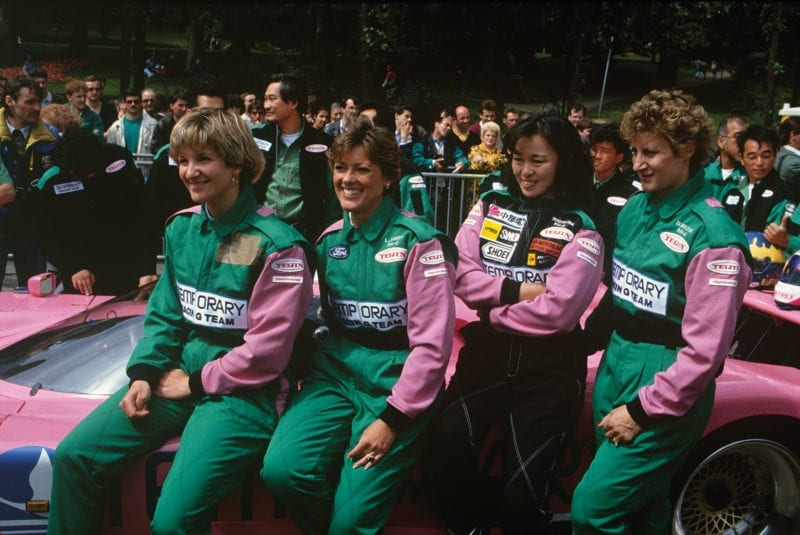
With Cathcy Muller, Lyn St James and Tomiko Yoshikawa at Le Mans in 1991
Motorsport Images
“On Monday we started again. You pull yourself back together because you’re there for a reason, it’s costing somebody an awful lot of money, and this is what you’ve dreamed of doing. I went out: 182 again. I was really stuck. So I thought, I feel fairly comfortable on Turn 1, I’m going to try it flat. Seems Turn 1 is the last turn you take flat, but what did I know? I went in keeping my right foot hard down. You almost had to move your left foot across and push it down on top of your right to make sure you didn’t lift. I got three-quarters of the way through the turn and the car flew off the track.
“The TV had been running Gordon’s crash over and over, and I’d forced myself to watch it just once. I made sure I didn’t see the actual impact, but I wanted to know how the accident started. As Gordon lost it he tried to correct, steer into the slide like you would on a road course, and he just turned right into the wall at 200mph. I said to myself, if I lose it I’ve got to turn the way of the spin and just let it go. So I did that, and it spun all the way to Turn 2, four flats on the tyres from the locked brakes. The team freaked out. They got the car back to the garage and they said, ‘That’s it. We already lost one driver. We’re going home.’ ‘No way,’ I said. ‘You fall off a horse, you get back on and ride it. Put on some fresh tyres, I’m going out again.’ So I went out and got to 184mph, just to prove something to myself.
“But during that week I lost a couple of engines, and I couldn’t get that 184 again, I was just stuck on 181, 182. I said to Dan Gurney, ‘Could you ask your driver Mike Mosely to do some laps in my Eagle, because I don’t know what to do.’ Dan said, ‘I’m not putting Mike in that car. You’re averaging 182mph, and you’re doing 190mph on the straight. The others are averaging 200, and they’re doing 218 on the straight. Until you get a better engine nobody is going to make that car go quicker.’ For the second qualifying weekend we rented another engine, and it was in a different league – but on the second lap it burned a piston. Declutch, switch off, coast back in. We rented yet another engine for Sunday. That burned a piston too. So there I was, DNQ.”
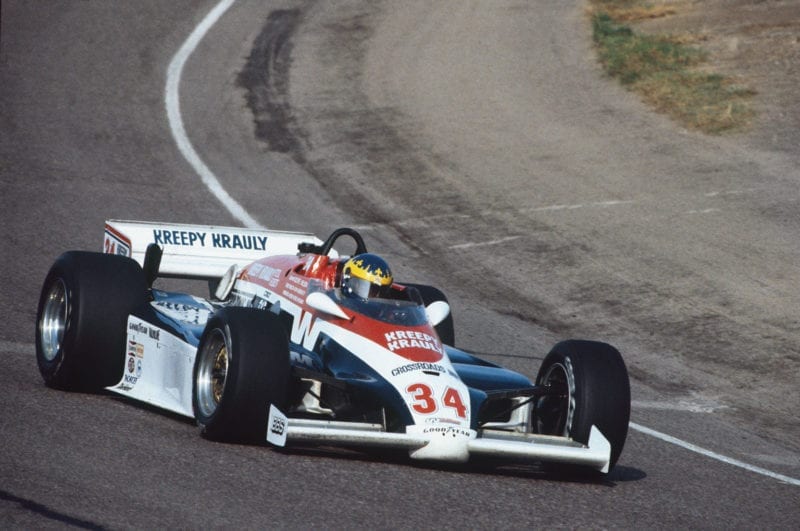
Driving a March in 1983 CART series
Motorsport Images
Desiré did start 11 Indycar races: her best was a fine 10th in the torrid heat of the 1983 300-mile Cleveland road race. And she made two more attempts to qualify at Indy. “In 1983 the car was no good and I had to walk away. In ’84 you needed 200 to qualify. I was in an old March, doing 195, 195, 195. The car owner said, ‘Push harder, or you’re going home.’ I said, ‘It’s all yours.’ They put Johnny Parsons Jr in the car, he’d done 12 Indys, finished fifth one year. And he did 192. As Jim Crawford said to me once, ‘At Indy it’s nothing to do with us. It’s all in the car.’”
In 1983 the Wilsons left Brands Hatch for the USA. Bernie Ecclestone hired Alan to work on the projected New York GP at Flushing Meadow, but conservationists eventually killed that off. Later they worked in Columbus, where Alan established an IMSA street race, and on the short-lived Indycar street race in Denver. In 1994 they set up Wilson Motorsport to design and build circuits. Since then they have created over 30, from street races and kart tracks to major facilities like Miller Motorsports in Salt Lake City, which Alan operated for its first three years. More recently they’ve been working on projects in India, New Zealand, Korea and Kazakhstan.
In three decades Des raced over 100 different types of car, from F3 in Macau to Formula Atlantic in New Zealand, from Ferrari 512BB at Sebring to Porsche 962 at Mount Fuji. In 1983 she drove a GTP March-Porsche sponsored by Kreepy Krauly, the South African pool sweeper firm. At Brainerd, Minnesota, a bolt locating the front upright broke at full speed on the straight. The car left the track, dug its nose in and cartwheeled for several hundred metres, disintegrating as it went. “It finally stopped upside down and on fire. I remember a marshal shouting, ‘Switch it off!’ and I looked for the master switch on the dash, but the dash wasn’t there. I had a broken right leg and my left foot was bashed up, otherwise I was OK. Three weeks later, with my leg in a flexible cast, I did the Elkhart Lake Indycar race. I couldn’t brake and blip the throttle at the same time, but I qualified 13th. In the race Howdy Holmes and Roger Mears collided, I lifted to avoid them, and Tom Sneva hit me.
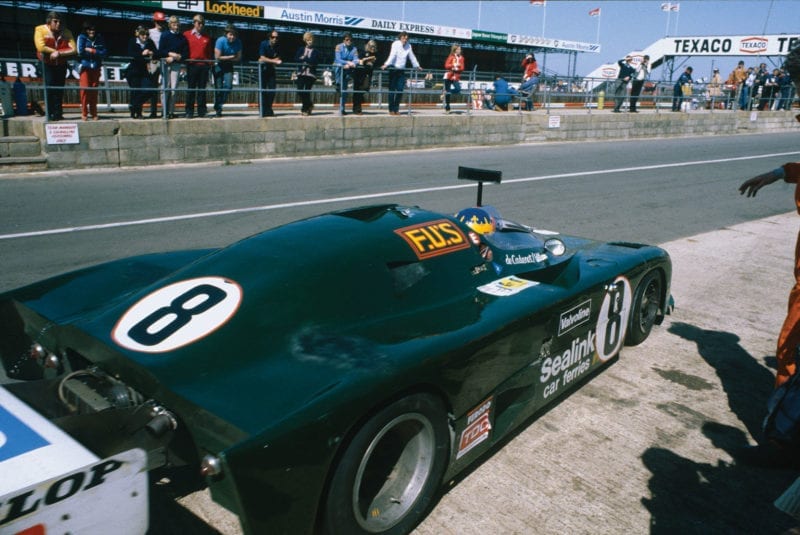
Des and de Cadenet gelled to win Silverstone 6 Hours in 1980
Motorsport Images
“In the 30 years since I tried, we still haven’t had a woman in F1. In my opinion there hasn’t been anyone who’s been taken seriously enough, whether that’s her own fault or not. Where’s the girl who has won titles in the lesser formulae? In the US Danica has enormous potential: she’s good on ovals, but doesn’t quite seem to get it together on road courses. Katherine Legge, Susie Stoddart, there are definitely women with ability, but they’ve got to win races. If a woman’s got the ultimate talent, there’s no physical or emotional reason why she shouldn’t win a Grand Prix.
“If I’d understood more about making deals, not been so naïve, things could have gone further for me. But I never had a strategy. I just thought, ‘Gee, tomorrow’s another race, let’s see how that goes.’ I met with prejudice a lot – there were plenty of drives I would have got if I hadn’t been a woman – but I could cope with that. I was raised in a male-dominated country where the woman’s place was in the kitchen. I never pushed in anyone’s face the fact that I was a woman.John Webb did plenty of that, to get the publicity, but I never thought of myself as a woman in motor racing. I’ve only ever thought of myself as one thing. A racing driver.”
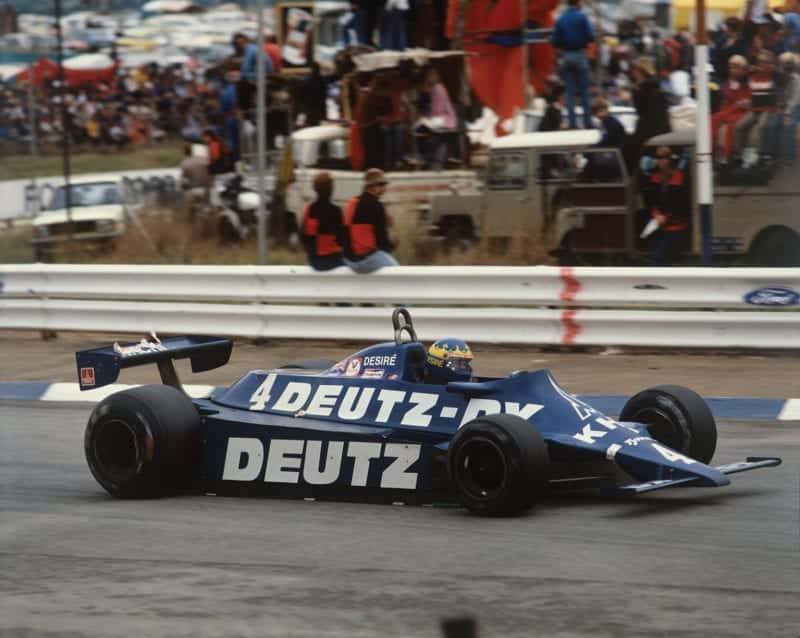
1981 South African GP with Tyrrell was the “opportunity of a lifetime”
Motorsport Images
